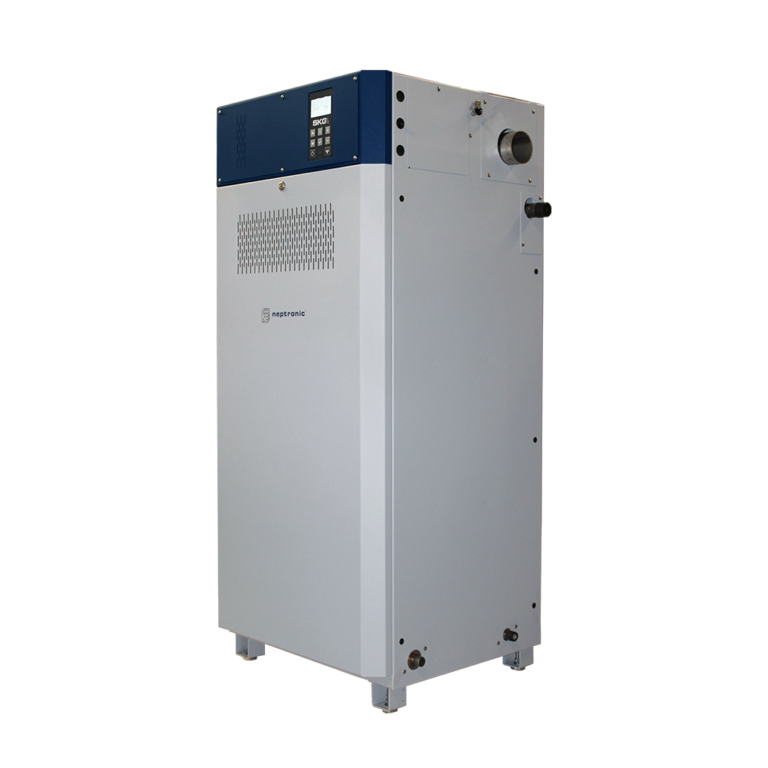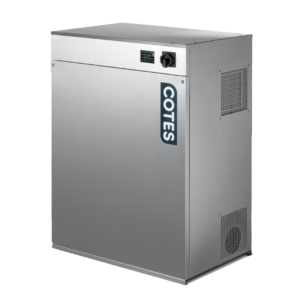 ‘
‘
A nice to have extra’, ‘Who will notice if we don’t include it?’, ‘Leave a space and we may put it in later’.
All phrases we hear on a regular basis as reasons to NOT include humidity control into a building’s air conditioning system.
The recent global pandemic has changed this view as we realise that good humidity control (50%rh) will reduce transmission of viruses and reduce its life.
There is lot of scientific evidence to show why the transmission of the virus is less in a humidity-controlled environment – there are numerous research papers and studies produced by doctors and scientists to support this. I am neither doctor nor scientist, but I do have considerable experience in humidity control and I will keep the reasoning straight forward.
In dry air the virus will fly around, travelling relatively long distances transmitting the disease from person to person.
Humidified air contains tiny water droplets – these collide with the virus making them heavy so they drop down to a surface rather than remaining airborne. Once on the surface they can be cleaned and sterilised, reducing further transmission.
The government have suggested increasing fresh air to flush out the virus before it is transmitted. This is great during the summer months when windows can be left open, but come the cold winter months this will not be so pleasant.
Mechanical ventilation has been sized to bring in a certain percentage of fresh air and to heat it to a comfortable level. It is not feasible to just turn the fans up and to achieve the air flows required or at the temperature desired. Not to mention the vast additional energy that would be required to achieve this if possible.
Furthermore, cold air holds less moisture than warm air, so once this fresh, cold air is brought into the office, care home, living room or classroom and heated, the natural relative humidity in winter can become close to 20%rh which we should be avoiding. Raising rh will actually make people feel warmer and hence reduce the required level of temperature control, saving energy.
So in winter months we have 1) low humidity which encourages the extended life of the virus and allows the virus to travel unchallenged through the air; 2) low ventilation rates as fresh air is limited and 3) lower performance of our bodies’ natural defence mechanisms as airways and mucus membranes are drier. This all leads to the perfect environment for spreading disease.
Can the solution be introducing humidity into the air? Could it be that simple?
The answer is yes. Not only can humidity assist with reducing the transmission of the virus – whether this be the common cold or Covid-19 – it also makes the environment more comfortable for human occupancy. Dry air dries out your mucus membrane in our nose and throat which is your defence mechanism again catching airborne viruses if moist. Dry eyes, eczema and asthma are all exacerbated by low humidity, and concentration levels and productivity also fall when we start to dehydrate.
Maintaining air at 50%rh will relieve this.
Installing a humidifier is not big money, it is straightforward to install with the correct advice, and provides all the benefits discussed above. In addition, however, maintaining a stable relative humidity at typically between 40-60% can have significant benefits in terms of the performance of equipment and machinery, by reducing static, providing dimensional stability to hydroscopic materials such as paper and wood, ensuring consistency in quality of output in food production and storage, to name but a few.
From a contractor’s viewpoint it is another piece of equipment to install and maintain. From the end user’s point of view this could be a game-changer in both occupant health and business performance.
These are not new arguments, and the documentation has been around for many years but it has taken the Covid-19 pandemic to raise the profile once again – even getting airtime on the BBC evening news. The good news is that systems can very often be retro-fitted, can often be unobtrusive, and are frequently less costly than is expected, with a fast and clearly identifiable return on investment.
Health, productivity, profit.
Humidity may be invisible, but its effects are considerable.

